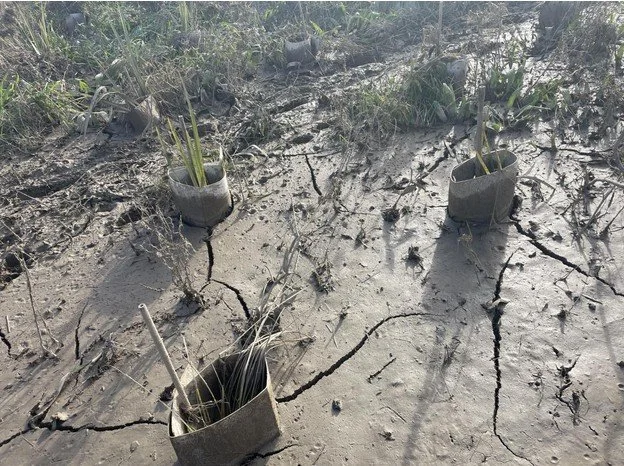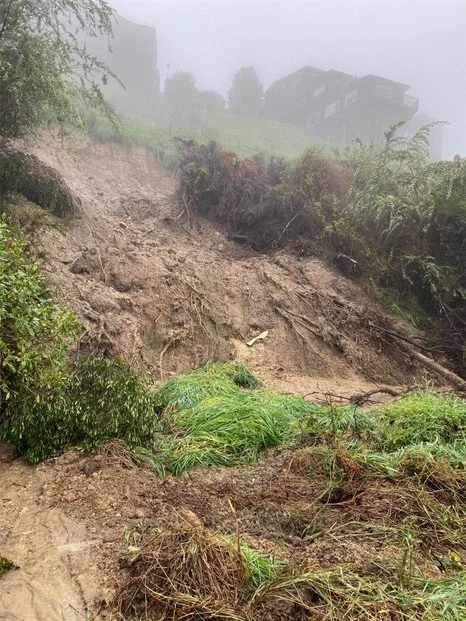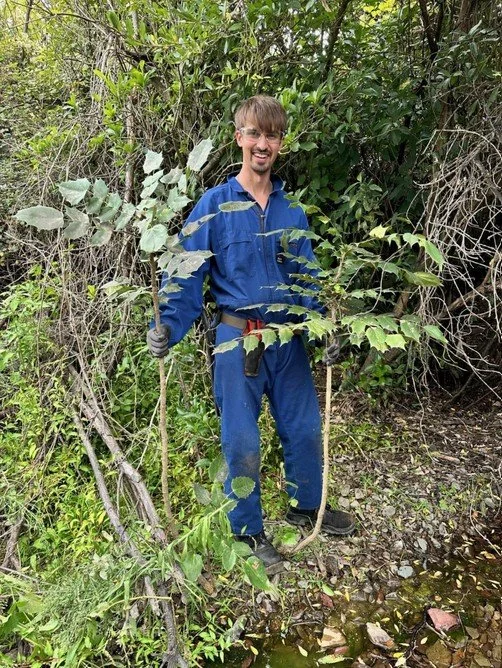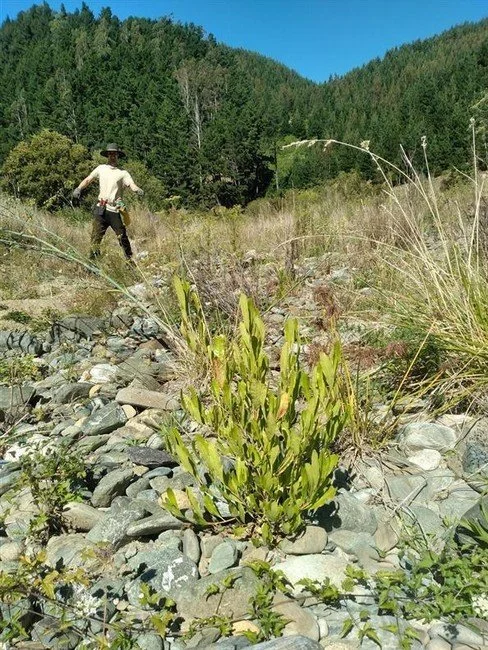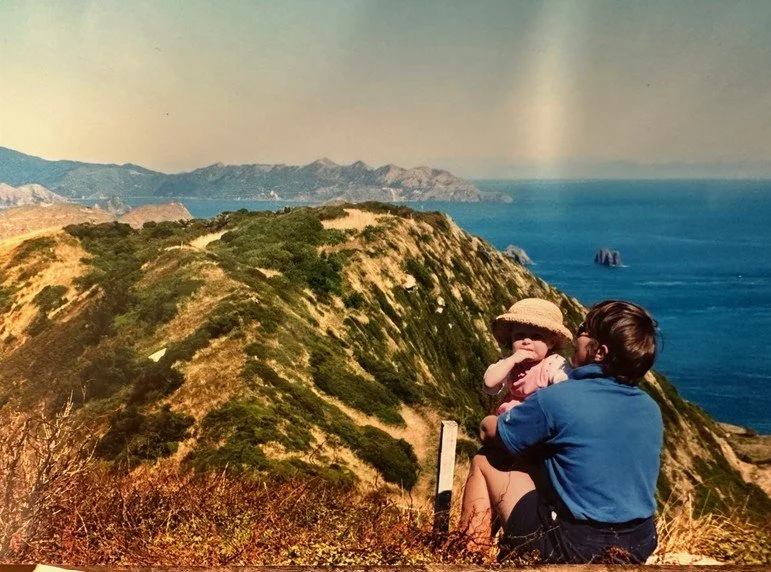FuturEcology & EmGuard ™ July 2025
By Jan Fryer
The River Rules the Valley. We are just lucky to live alongside it (the title of the video by Aimee Jules below).
https://www.facebook.com/share/r/1AhWpXAXW4/?mibextid=wwXIfr
How true is this video and statement, having seen what is happening, not just here in Nelson/ Tasman but in Texas and many other places in the world. Our hearts go out to everyone affected.
Just about all our last few newsletters have had reference to flooding.
What does that tell us about the importance of starting to seriously look at our resilience in the face of climatic challenges.
Many years ago, Robert and I and one-year-old Elizabeth were dropped onto a rocky Island (Stephens Island) in the Cook Strait, to be caretakers of the Island for a year or so.
It is a wild and remote place, so we were totally reliant on ourselves for our day-to-day survival. The early lighthouse keepers knew a thing or two about siting a house on a wind-swept island. I would always marvel at how we could be sitting in a lovely calm wee spot on our verandah with the wind absolutely howling through the lighthouse only a handful of steps away. It certainly was an extremely effective deterrent for stopping Elizabeth going out the gate.
We had to do a weather observation four times a day, every day, for Met Service and send the information back to them via radio to help with the weather forecasting for the area. We learnt to read cloud formations, wind direction, speed etc and what it might mean in terms of what we needed to batten down on the island to survive the next howling gale. Respect for the weather was a huge part of our experience. We also didn’t have anyone telling us what we had to do. We had to figure that out for ourselves. Our safety depended on it.
“Hanging in there”
I can’t help but wonder at the expectations of the wider community when I hear things like “we weren’t told how much rain to expect” or “we weren’t warned enough”. What I have noticed about many of our recent weather events is just how unpredictable they are. One valley can be getting an absolute hammering and the next valley over can just be having a very wet day. It is basically impossible to accurately predict.
However, I think that getting to really understand what weather systems mean on a weather map is crucial for everyone. It should be taught in schools as a core subject.
In our line of work, we all study and discuss the weather maps on a daily basis and what they mean for not just today, but the following week or month as well.
So, a plea from us. Please understand the weather maps. Make Met Service and YR weather your go to page every day, and make your plans around how you personally are going to deal with what may be heading our way. Don’t wait for someone from the bureaucracy to tell you what to do. They are probably worrying about their own family, property or relatives as well, if they are in the middle of a disastrous situation.
Take care out there. Kia kaha Aotearoa New Zealand.
Weed of the Month
Cape Ivy, Senecio angulatus
By Jan Fryer
We were out checking on flood damage in one of our plantings today, when I came across this very striking looking plant overtaking one of the coprosmas. It was in full, magnificent flower and so really stood out on this dull, wet midwinter day.
We don’t see much of this in our plantings, so I am assuming a piece of it travelled downstream in one of the many floods we have had, lodged in the sediment by this tree and away it went.
Cape Ivy originates from South Africa. It smothers ground and low growing plants, and forms thick, dense, long-lasting mats. It produces lots of long-lived seeds that are wind spread, so they are able to be dispersed far and wide. It will also form by layering of stems and from stem fragments. It tolerates salt, wind, drought, semi-shade and mechanical damage.
It is a scrambling plant with wiry, woody stems, growing up to 2-3 m tall. The leaves are bright green with a fleshy, leathery appearance and 1-3 rough points on each side. The top leaves are often smaller and narrower and are sometimes smooth-edged.
Flowers are in bright yellow clusters, with a ragwort-like appearance, followed by fluffy seeds.
Control by slashing or cutting it out from trees and hand pulling any regrowth. Try to get to it before it sets seed. Dispose of all parts by sending to land fill, burning or deep burial. Note that stumps and dropped stems will resprout, so go back to it until it is no more!
Cut and paste any stumps as near to the ground and as soon as possible after cutting with a suitable herbicide eg “glyphosate based “Cut N Paste. (120g/L)
Foliage can be sprayed using glyphosate (360g/L) with a recommended adjuvant at a rate of 1%, covering the entire plant.
What to plant on unstable hill sides
By Jan Fryer
I recently had a call from one of our EmGuard customers who was facing the prospect of a slipping hillside that borders a coastal cliff. She is an avid gardener and wanted to do something with native plants to help prevent any further erosion. The planting needed aesthetic appeal, to be quick growing and have species that wouldn’t block the view of the ocean. Not a difficult task at all...
The key with any areas that are facing slips is to firstly control any water runoff onto the site. Next, try and get as much cover onto any bare ground as quickly as possible, preferably with plants that have a good fibrous root system. These, in the main are the monocotyledons, so your flaxes (Phormium cookianum), toe toe, cabbage trees, grasses, renga renga, Dianella, Libertia and such like.
Slips are generally in the open, so you have the added complication of full sun and potentially frost, depending on what part of the country you are in.
If views are not an issue, then we recommend kanuka, ngaio, cabbage trees, ake ake, coprosma and pittosporums for plants with a deeper root system, that are relatively fast growing. Use your local plant guides, often available from local councils, to ascertain which are the right trees for your particular location.
Wool matting to help with stability is also worth considering. It can be purchased by the roll and planted into. It will naturally bio-degrade as the plants establish and does not have a plastic netting core like some products.
If you would like further details about this, please get in touch with us, or visit our Appointments and Plans page.
Photo taken from Māori Pa Road Reserve - Flaxes and grasses thriving after the April 2025 flooding event.
Flood damage? What next
By Evelyn Nashiro
I regularly read updates on the IPCC (Intergovernmental Panel on Climate Change) assessment reports on impacts, adaptation and vulnerability. I always feel very overwhelmed looking at the different scenarios used to model climate change trajectories, and how frequently extreme weather events are predicted.
However, when I get very worried about it, I try to focus on every native tree and grass that we have been planting. These are already playing a crucial role in climate change mitigation and adaptation strategies for Nelson and Tasman.
Through the years and after much flood recovery work, we have learnt that there is no need to force native trees upright, or try to straighten them up after flood damage. Instead, clear away any debris caught in their branches and around their bases. If they are established native trees, we have to trust in their strength and their deep roots, naturally designed to stay resilient. You will see that in their own time and with the sunlight, they will often find their own way upright again.
After all the flooding events lately, I am getting to love harakeke. Their resilient dense root system helps in stabilising the soil, and their ability to thrive and resist most of the extreme flooding events is especially heartening. Native grasses also play a pivotal role in climate change mitigation and adaptation plans, as grasses are well adapted to flood conditions, thanks to their strong and fibrous root systems. So now, the more I see flaxes and grasses close to a stream or river, the more I think that this species should be in mind for every flood mitigation and adaptation plan.
Challies August 2024 – Just planted.
Challies July 2025 – Post flood. Just about everything you can see went underwater. Still valiantly standing.
Projects Update - New native plants in Koata Park/Codgers Mountain Bike Park
By Evelyn Nashiro
After many exhausting hours of scrub barring during the summer and doing the site preparation for the project, we have planted and guarded around 1200 native plants on the spur at the base of the Mountain Bike Park. This site had some of the softest soils that we have ever planted in. We certainly know that the new native plants will thrive along with the 5-year-old native trees that we planted in 2019. See the transformation in the pictures below!
Elliot’s time with FuturEcology
By Evelyn Nashiro
Since last year, Tech 5 has provided us with very skilled team members, and we have been very lucky to have Elliot working consistently with us for almost seven months.
We enjoyed working with Elliot, who was always very curious and willing to learn more about Aotearoa’s conservation practices. Elliot has gained a lot of skills in the last few months, from being very accurate with handling the scrub bar to recognising several invasive species like Mahonia, Akebia, banana passionfruit and climbing dock. It has been inspirational working with Elliot, as he showed so much interest in conservation and challenged us to read and learn more about Aotearoa’s unique flora and fauna.
We wish Elliot the best of luck as he embarks on a road trip around the South Island before heading back to the UK, where we are sure he will continue on his conservation journey. He was keen to explore doing something about the squirrel problem in the UK.
All the best, Elliot.
EmGuard Update
By Emma Petch
One of the favourite parts of our job is getting pictures of our customers' wonderful projects happening around the country.
This week, Talia from Blenheim sent us this lovely video from their wonderful project in Ōhinemahuta Reserve. It is always heartwarming seeing kids getting stuck in and showing an interest in the natural environment.
We have plenty of stock on hand at the moment, including the new and popular E-Lite guard.
If you are interested in giving them a try, please get in touch and we will get them on their way to you!
Interesting Snippets
What we’ve been watching
Lockerbie: A Search for Truth
by Cheril Barber
Lockerbie: A Search for Truth is a five-part British television drama that premiered on January 2, 2025.
The series dramatizes the aftermath of the 1988 bombing of Pan Am Flight 103 over Lockerbie, Scotland, which resulted in 270 deaths. It focuses on Dr. Jim Swire, portrayed by Colin Firth, whose daughter Flora was among the victims. Driven by grief and a quest for justice, Swire becomes a spokesperson for the victims' families, challenging official narratives and seeking accountability.
Available on TVNZ Plus.
What we’ve been eating
by Emma Petch
Our little winter routine, seems to be searching for the best coffee and scone in the Nelson region – not a cheap hobby, but lovely none the less!
Last weekend we went to The Craftsman Cafe in Bateup Road, Richmond and couldn’t help ourselves when it came to the menu. I indulged in the roast beef and horseradish cream sandwich and can quite easily say it is one of the best brunches I have had!
If you find yourself in the Nelson/Tasman region, I would highly recommend stopping in!
Bad News Snippet
by Emma Petch
It may be hard to believe, but many of our team have a slightly less than rational fear of spiders. Seeing this in the news this week has definitely made our skin crawl!
Keep an eye out for these invasive 8-legged arachnids.
New venomous spider makes New Zealand home | RNZ News
Word of the Winter - Mizzle
A misty drizzle. The term is commonly used in Cornwall and Devon to describe a mixture of fine drizzle and thick, saturating mist or fog.
Conclusion:
By Emma Petch
Jan and Elizabeth on Stephen’s Island, 1997.
We are in the thick of winter now, so we hope you are taking the time to enjoy some hobbies and staying warm and dry.
I am busy planning our spring garden and I can’t tell you how much we are looking forward to seeing those first few daffodils and lambs!
As we write this, our region is in another state of emergency and much of the rest of country is affected with this particular storm, so please take care out there. This storm has wind as well as rain, so trees falling over may well be an issue.
The days are theoretically getting longer and it’s only a few weeks till we can plant the first potatoes. Hang in there.
Here is a wee video to brighten your day on these gloomy mid-winter days.
Happy Baby Seals Playing - Tauranga Bay - West Coast of New Zealand.
If you have any projects in mind and would like to talk further, give us a call or pop in and see us.
We look forward to hearing from you!


